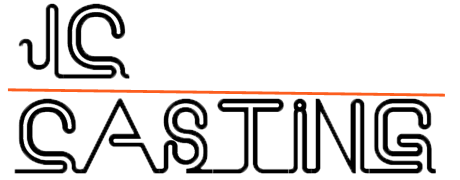6 Common casting defects and Formation Reason
Casting Defects 1: Blowholes.
Blowholes exist on the surface or inside of the casting. They are round, oval or irregular in shape. Sometimes, multiple stomata form an air mass.
Usually pear-shaped under the skin. The choke hole has an irregular shape and a rough surface. Air pockets are grooves on the surface of casting that have a smooth surface.
Visible Blowhols can be found by visual inspection. Subcutaneous Blowhols can only be found after machining.
Reason
- The preheat temperature of the mold is too low. The liquid metal is cooled too quickly through the gating system.
- The mold exhaust design is poor, and the gas cannot be discharged smoothly.
- The coating is not good, the exhaust itself is not good, and even the gas itself volatilizes or decomposes.
- The surface of the mold cavity has holes and pits.
- After the liquid metal is injected into the holes and pits, the gas rapidly expands and compresses.
- The blocked holes are formed.The cavity surface is corroded and not cleaned.
- The raw material (sand core) is stored improperly and not preheated before use.
- Poor deoxidizer. Insufficient dose or improper operation, etc.
Casting Defects 2: Shrinkage Porosity
Shrinkage is a rough surface hole that exists on the surface or inside of a casting. Shrinkage cavities are many dispersed small Blowhols, namely shrinkage cavities. Shrinkage cavities or coarse grains at the shrinkage cavities. It usually occurs near the runner of the casting. The root of the riser. The thick wall section. The wall thickness transition section and between the thick and thin sections of the large plane.
Reason
- The mold working temperature control does not meet the requirements of directional solidification
- Improper selection of coating and poor control of coating thickness in different partsImproper design of casting position in mold
- Improper design of the pouring riser, the design cannot achieve enough feed
- The temperature is too low or too high.
Casting Defects 3: Slag Holes
Slag holes are open holes or black holes in castings. The hole is completely or partially filled with slag. Irregular shape. Difficult to find slag inclusions in small flux. After the slag is removed, smooth Blowhols appear. Usually distributed in the casting. In the lower part of the position, close to the inner runner or the dead corner of the casting. The oxide slag is mainly distributed in the network structure on the surface of the casting. The casting near the inner runner is sometimes flaky. Or irregular cloud layers are wrinkled. Or form a thin interlayer. Or exist in the form of a cluster inside the casting. One of the root causes of cracks.
Reason
- Slag holes are mainly caused by the alloy smelting process and the pouring process. (including improper design of the pouring system).
- The mold itself will not cause slag holes.
- Metal mold is one of the effective ways to avoid slag holes.
Casting Defects 4: Cracks
The appearance of cracks is straight or irregularly curved.
The surface of the hot crack is strongly oxidized and becomes dark gray or black. There is no metallic luster. The cold cracked surface is clean and metallic.
Usually, external cracks in castings can be seen directly. But internal cracks can only be seen by other methods. Cracks are often associated with defects such as shrinkage porosity and slag inclusions.
They mainly appear inside the sharp corners of the casting, at the junction of thick and thin walls. The thermal connection area where the pouring riser is connected to the casting.
Reason
- Metal mold castings are prone to crack defects. Because the metal mold itself does not shrink.
- The cooling rate is fast. This easily increases the internal stress of the casting.
- Opening the hole too early or too late.
- The pouring angle is too small or too large.
- The coating is too large and the thickness is easy to cause cracking of the casting.
- Cracks are also easily caused when the cavity itself has cracks.
Casting Defects 5: Cold insulation
Cold barriers are surface gaps with straight seams or rounded corners. The middle is separated by oxide scales and not fully bonded together.
When the cold barrier is severe, it becomes “underground”. Cold bulkheads often appear on the top wall of castings. Horizontal or vertical thin surfaces, the junction of thick and thin walls or thin auxiliary plates.
Reason
- The exhaust design of the metal mold is unreasonable.
- The working temperature is too low.
- The paint quality is not good.
- The wheel opening position is incorrect.
- Pouring speed is too slow
Casting Defects 6: Sand holes
Relatively regular holes are formed on the surface or inside of the casting. The shape of the holes is consistent with the shape of the sand grains. When just coming out of the mold, you can see the sand embedded in the surface of the casting. And the sand can be taken out.
Reason
- The sand particles falling from the surface of the sand core are wrapped by the copper liquid and form holes on the surface of the casting.
- Sand core surface strength is not good, charred or not fully cured.
- The size of the sand core does not match the outer mold. It will be compressed when the mold is closed.
- Sand core is broken.Immerse the mold in sand-contaminated graphite water.
- The sand that has been wiped off between the sand core of the pouring ladle and the runner is flushed into the cavity with copper water.
Above, is a brief introduction of 6 common Casting Defects and their formation causes.
Using X-ray imaging inspection equipment, non-destructive inspection of castings can be effectively carried out. JC Casting is a casting, processing and export-oriented foundry. We can provide effective NDT solutions. Be the first choice for your casting industry.
